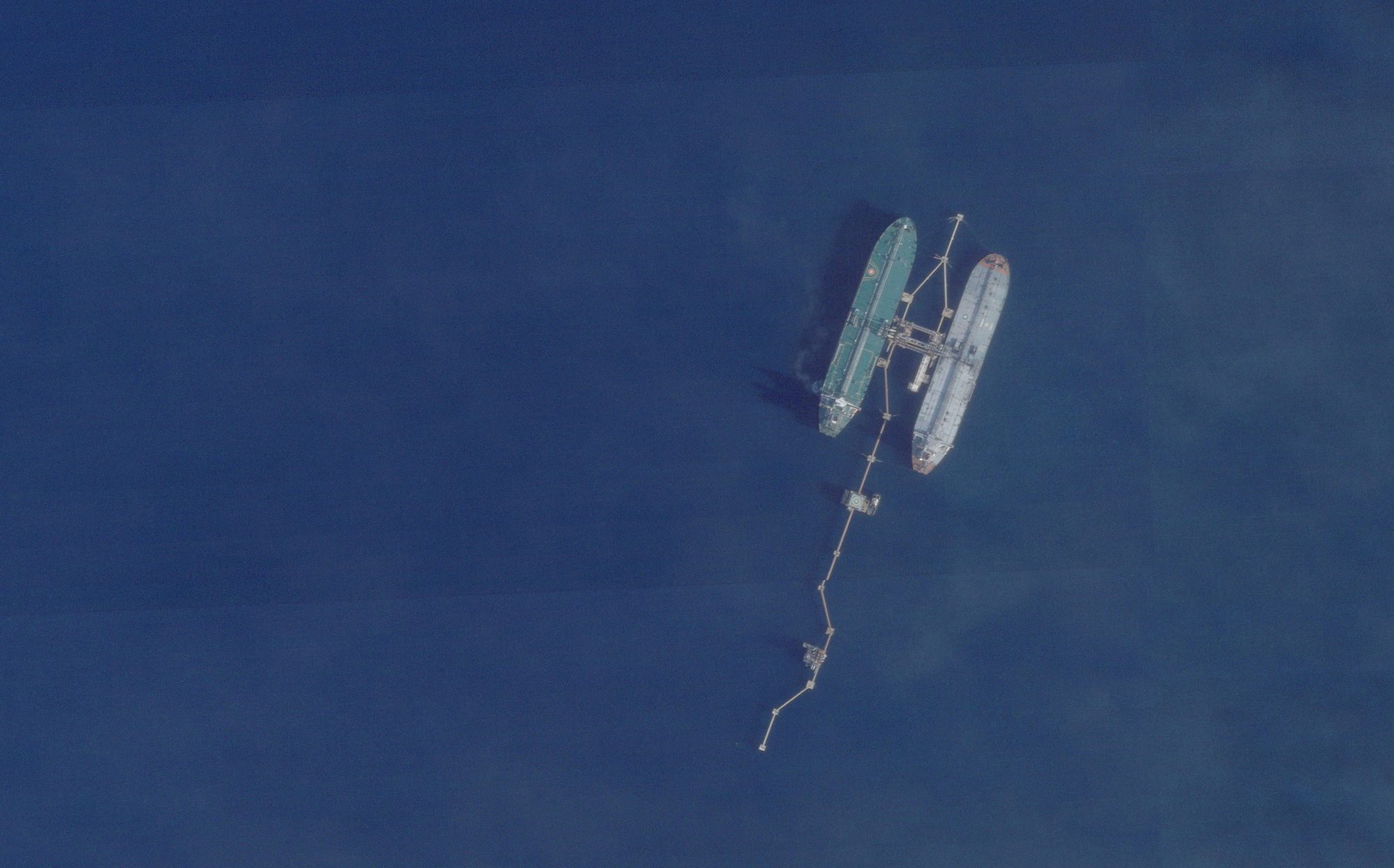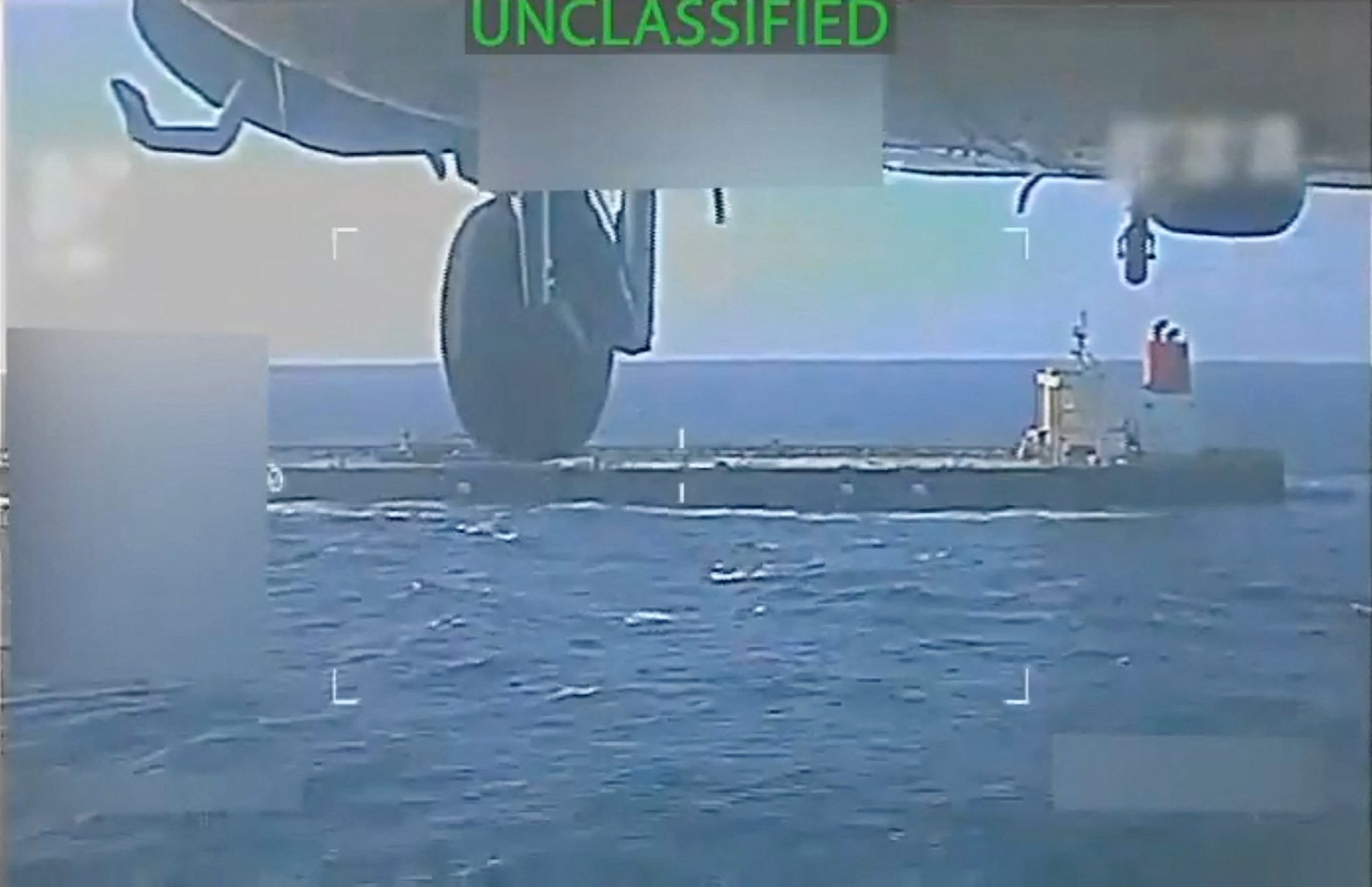In the latest development of an ongoing series of incidents, Iran has seized a tanker in the Gulf of Oman, further escalating tensions in the region.
The Marshall Islands-flagged tanker, St Nikolas, was boarded by Iranian Navy today as it sailed in the Gulf of Oman carrying Iraqi crude oil destined for Turkey. Its AIS tracking system has since been turned off and it is reportedly now heading towards the Iranian port of Bandar-e-Jask.
This incident is seemingly connected to the confiscation of an Iranian oil cargo from the ship by the United States last year under a deal reached between the U.S. Justice Department and the ship’s operator, Greece-based Empire Navigation Inc.
Currently, the St Nikolas is loaded with 145,000 metric tonnes (~1 million barrels) of oil, which was loaded in the Iraqi port of Basra and was bound for Aliaga in western Turkey. Turkey’s Tupras has confirmed that the ship is carrying oil it had purchased from Iraqi state oil company SOMO.
Iranian state media has reportedly said today’s seizure is in retaliation to the “theft” of Iranian oil by the United States last year.
Background
In April 2023, the U.S. carried out a sanctions enforcement operation resulting in the seizure of the tanker, previously known as the Suez Rajan, in the South China Sea near Singapore, as the the ship was loaded with over 980,000 barrels of Iranian crude oil belonging to the Iran’s Islamic Revolutionary Guard Corps (IRGC).
At some point following the seizure, the ship was brought to the U.S. where it waited off the coast of Texas for more than two-and-a-half months amid fears of retaliation before the oil was finally discharged. A senior commander from the IRGC navy warned Iran would retaliate against any oil company unloading Iranian oil from a seized tanker.
Almost immediately after the seizure of the Suez Rajan, Iran retaliated by seizing two tankers near the Strait of Hormuz, namely the Advantage Sweet and Niovi, which it continues to hold to this day. The former was carrying cargo for major U.S. oil company Chevron Corp, however Iran’s reasoning for the Niovi seizure are a bit murkier. A few months later, the Bahamas-flagged Richmond Voyager, also chartered by U.S.-based Chevron, narrowly avoided boarding in the Gulf of Oman thanks to the arrival of a U.S. Navy warship. Iran had accused the Richmond Voyager of colliding with an Iranian ship and claimed to have had a court order for its seizure.
The U.S. Justice Department finally provided details of the April seizure of the Suez Rajan in September. According to the Department, the seizure came after its bareboat charterer, Suez Rajan Limited, pleaded guilty to conspiring to violate the International Emergency Economic Powers Act (IEEPA) and economic sanctions against Iran in connection with a scheme to covertly sell and transport the oil to a customer abroad. In addition to the guilty plea, the Justice Department said it had also reached a deferred prosecution agreement (DPA) with Empire Navigation under which the company agreed to cooperate with the government and transport the Iranian oil to the United States for actual physical seizure, while also incurring the expenses of the voyage.
The Justice Department described the resolution as the first-ever criminal resolution in the U.S. involving a company that violated sanctions by facilitating the illicit sale and transport of Iranian oil.
The Strait of Hormuz and Gulf of Oman with the Persian Gulf, is a crucial waterway through which a fifth of all traded oil passes. It has become a focal point of tensions in the region after former President Trump withdrew the U.S. from the Iranian nuclear deal in 2018. Since 2019, Iran has carried out a series of ship seizures and assaults targeting shipping in Gulf waters.
According to the U.S., around 20 merchant vessels attacked or seized by Iran since 2021. Combined with the tanker seizures and assaults last spring, the U.S. increased its military presence in the Middle East last summer and was even reportedly considering placing armed military personnel on foreign-flagged ships.
There was another famous incident in 2022 where Greece impounded the Iranian tanker Pegas on behalf of the U.S., prompting Iranian forces to seize two Greek tankers a month later. After the U.S. confiscated a portion of the cargo, a Greece’s supreme ruled that the cargo had to be returned to Iran.
Amid these enflamed tensions, after the U.S. seizure of the Suez Rajan in April 2023, Greece (which happens to be the largest ship-owning nation) issued warnings to shipowners to avoid sailing close to Iranian waters to avoid possible retaliation.
With the Iranian-backed Houthis launching drone and missile attacks from Yemen into international shipping lanes in the Red Sea, this latest seemingly unrelated tanker seizure by Iran serves to further heighten tensions around critical maritime chokepoints in the Middle East.

 Join The Club
Join The Club









